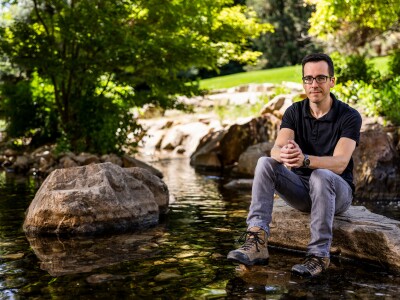BYU beat out 157 other collegiate teams from 24 countries for the title

For the BYU Rocketry Team, celebrating the Fourth of July this year with fireworks just isn’t going to cut it. After all, fireworks that might shoot a few hundred feet in the air pale in comparison to the 10,000 feet their BYU rocket reached while winning the 2023 Spaceport America Cup.
The BYU rocket, named Solitude in honor of the Utah-based ski resort, traveled over 608 mph (which is 80% of the speed of sound) at the international collegiate event, coming within feet of the 10,000-foot altitude target and successfully releasing its payload to bolster the best overall performance of all 158 teams in the competition.
The student led BYU Rocketry team painstakingly designed their rocket for over a year to prepare for the event, the world’s largest intercollegiate rocket engineering competition. The win marks the first time BYU has won the event in their 15 years of competing.
“This isn’t just a hobby; it is something we are striving to be excellent at,” said BYU’s team leader Derrick Walker, now an intern at Bell Helicopter. “BYU rocketry has guided a purpose for my classes and time at BYU, and I’m excited to show off the team to people who don’t know what we are capable of.”

Roughly 1,700 people, including 158 teams of college students from 24 countries — about half of which were international — gathered for 6 days to compete and showcase their rocketeering skills. An additional 20,000 eager viewers streamed the event online while the students survived the stifling New Mexico desert near the White Sands Missile Range.
The goal was to launch a rocket to a precise altitude target and release sophisticated technology weighing no less than 8.8 pounds to measure high altitude thermal radiation in the earth’s atmosphere. BYU’s rocket peaked just 60 feet below the targeted threshold, securing first place slot in their category.
There are 1000 points possible in the competition; half of those points come from the design, manufacture and testing of the rocket, and the other half are based upon how well the rocket flies. This includes how close it gets to 10,000 feet, whether the parachutes deploy properly, and if the rocket is recovered without any damage. BYU earned the most points to claim the title, beating out second-place Cornell University in a close finish.
“Watching a rocket launch has always been exciting to me,” said BYU’s lead structure engineer, Anya Jeppson, now a participant in a NASA internship program. “It represents our desire to push past the boundaries of what we thought was possible. I think that’s the hallmark of human enterprise.”
Along with the Spaceport America Cup, BYU, brought home the 1st place award for Modeling and Simulation. Their study analyzing the potential for rocket fins to vibrate dangerously during flight was highlighted as an important investigation that would benefit future generations of rocketeers. Their winning rocket is proudly decorated in the fashion of the new Utah state flag, complete with a beehive.
“These students reflect the best of BYU — the science and the service,” said faculty advisor David Fullwood, a BYU professor of engineering. “On the one hand, this is an incredibly competitive event – you need to have a perfect flight to win; on the other hand, the camaraderie is amazing, as teams reach out to help everyone around them perform their best.”
Fullwood said BYU students went above and beyond this year, loaning toolkits and knowledge to teams who couldn’t fit everything in their suitcase, including teams from Africa or Australia.”
Members of the BYU Rocketry Team have already started building impressive resumes. Some of the students had to fly in from internships at NASA, Lawrence Livermore National Lab, and Bell Helicopter for the competition. Others on the team are interning at BAE near Hill Airforce Base, Janicki, and Northrop Grumman in Utah.
Tonight, the BYU students can sit back and enjoy the air show without worrying about the result, but they will all agree that nothing can top the feeling they got after launching the best collegiate rocket in America.




